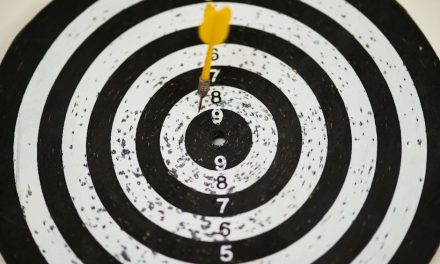Table of Contents
- Introduction
- The Importance of Setting Clear Goals in Your Personal Development Plan
- Steps to Identify Your Strengths and Weaknesses for Career Growth
- Strategies for Creating an Effective Action Plan in Your Personal Development Journey
- Tips for Tracking and Evaluating Your Progress in Achieving Career Development Goals
- Q&A
- Conclusion
“Unlock Your Potential: Craft Your Path to Success with a Personal Development Plan”
Introduction
Creating a personal development plan for your career is essential for setting goals, identifying areas for improvement, and mapping out a path to success. By taking the time to develop a plan, you can enhance your skills, expand your knowledge, and achieve your professional aspirations. In this guide, we will explore the steps involved in creating a personal development plan that will help you grow and thrive in your career.
The Importance of Setting Clear Goals in Your Personal Development Plan

The Importance of Setting Clear Goals in Your Personal Development Plan
When it comes to personal development, setting clear goals is essential. Without a clear direction, it can be challenging to make progress and achieve the desired outcomes. Setting goals provides a roadmap for your personal development journey, helping you stay focused and motivated along the way.
One of the primary benefits of setting clear goals is that it gives you a sense of purpose. When you have a specific target in mind, you are more likely to take action and make the necessary changes to achieve it. Without goals, you may find yourself drifting aimlessly, unsure of what you want to accomplish or how to get there.
Setting clear goals also helps you prioritize your efforts. With so many potential areas for personal development, it can be overwhelming to try and tackle everything at once. By setting goals, you can identify the most important areas to focus on and allocate your time and energy accordingly. This allows you to make progress in a more efficient and effective manner.
Furthermore, setting clear goals provides a way to measure your progress. Without specific targets, it can be challenging to determine whether you are making any headway in your personal development. By setting goals, you can track your progress and celebrate your achievements along the way. This not only provides a sense of accomplishment but also helps to keep you motivated and inspired to continue working towards your goals.
In addition to providing direction and motivation, setting clear goals also helps you stay accountable. When you have a specific target in mind, it becomes easier to hold yourself accountable for taking the necessary actions to achieve it. You can set deadlines and milestones to ensure that you are making consistent progress towards your goals. This accountability can be a powerful tool in driving your personal development forward.
Another benefit of setting clear goals is that it allows you to break down larger objectives into smaller, more manageable tasks. When you have a big goal in mind, it can be overwhelming to think about all the steps required to achieve it. By breaking it down into smaller tasks, you can create a step-by-step plan that makes the goal more attainable. This not only helps to reduce overwhelm but also provides a clear roadmap for your personal development journey.
Finally, setting clear goals helps to increase your self-confidence. When you set goals and achieve them, you prove to yourself that you are capable of growth and progress. This boosts your self-esteem and gives you the confidence to tackle even bigger challenges in the future. By setting and achieving goals, you build a track record of success that can propel you forward in your personal and professional life.
In conclusion, setting clear goals is a crucial component of any personal development plan. It provides direction, motivation, accountability, and a sense of purpose. By setting goals, you can prioritize your efforts, measure your progress, and break down larger objectives into smaller, more manageable tasks. Ultimately, setting clear goals helps to increase your self-confidence and propel you towards personal and professional success. So, take the time to set clear goals for your personal development journey and watch as you make steady progress towards your desired outcomes.
Steps to Identify Your Strengths and Weaknesses for Career Growth
A personal development plan is a crucial tool for anyone looking to advance their career. It helps individuals identify their strengths and weaknesses, set goals, and create a roadmap for their professional growth. In this section, we will discuss the steps to identify your strengths and weaknesses for career growth.
The first step in identifying your strengths and weaknesses is self-reflection. Take some time to think about your past experiences, both in your personal and professional life. Consider the tasks or projects that you excelled at and enjoyed doing. These are likely areas where you have strengths. On the other hand, think about the tasks or projects that you struggled with or didn’t enjoy. These are areas where you may have weaknesses.
Another way to identify your strengths and weaknesses is to seek feedback from others. Ask your colleagues, supervisors, or mentors for their honest opinion about your performance. They may be able to provide valuable insights that you may not have considered. Additionally, consider taking assessments or tests that are designed to identify your strengths and weaknesses. These assessments can provide objective data that can help you gain a better understanding of yourself.
Once you have identified your strengths and weaknesses, it is important to analyze them. Look for patterns or common themes in your strengths. For example, you may find that you excel in tasks that require creativity or problem-solving skills. Understanding these patterns can help you identify the areas where you have a natural talent or aptitude.
Similarly, analyze your weaknesses to understand the underlying reasons behind them. Are there any specific skills or knowledge gaps that you need to address? Are there any limiting beliefs or self-doubts that are holding you back? By understanding the root causes of your weaknesses, you can develop strategies to overcome them.
After analyzing your strengths and weaknesses, it is time to set goals for your career growth. Based on your strengths, identify areas where you want to further develop and excel. These goals should be specific, measurable, achievable, relevant, and time-bound (SMART). For example, if you have a strength in leadership, you may set a goal to take on a managerial role within the next two years.
On the other hand, identify areas where you want to improve your weaknesses. These goals should also be SMART. For example, if you struggle with public speaking, you may set a goal to enroll in a public speaking course and improve your skills within six months.
Once you have set your goals, it is important to create a plan of action. Break down your goals into smaller, manageable steps. Identify the resources, support, and training that you need to achieve your goals. Create a timeline and set deadlines for each step. Regularly review and update your plan to ensure that you are making progress towards your goals.
In conclusion, identifying your strengths and weaknesses is a crucial step in creating a personal development plan for your career. Self-reflection, seeking feedback, and taking assessments can help you gain a better understanding of yourself. Analyzing your strengths and weaknesses can help you set goals and develop strategies for your career growth. By following these steps, you can create a roadmap for your professional success.
Strategies for Creating an Effective Action Plan in Your Personal Development Journey
Creating a personal development plan for your career is an essential step in achieving your professional goals. It provides a roadmap for your personal growth and helps you stay focused and motivated. In this article, we will discuss strategies for creating an effective action plan in your personal development journey.
The first step in creating a personal development plan is to assess your current skills and strengths. Take some time to reflect on your abilities and identify areas where you excel. This self-assessment will help you understand your starting point and determine the skills you need to develop further.
Once you have identified your strengths, it is important to set clear and specific goals. Your goals should be measurable and achievable within a specific timeframe. For example, if you want to improve your leadership skills, you could set a goal to complete a leadership training program within the next six months.
After setting your goals, it is crucial to break them down into smaller, actionable steps. This will make them more manageable and increase your chances of success. For instance, if your goal is to improve your public speaking skills, you could break it down into steps such as joining a toastmasters club, practicing in front of a mirror, and delivering a presentation to a small group of colleagues.
In addition to setting goals and breaking them down into smaller steps, it is important to prioritize your actions. Focus on the most important tasks that will have the greatest impact on your personal development. This will help you stay organized and avoid feeling overwhelmed.
Another strategy for creating an effective action plan is to seek feedback and guidance from others. Reach out to mentors, colleagues, or industry experts who can provide valuable insights and advice. Their feedback can help you identify blind spots and areas for improvement that you may have overlooked.
Furthermore, it is important to continuously track your progress and make adjustments as needed. Regularly review your action plan and assess whether you are on track to achieving your goals. If necessary, make changes to your plan to ensure that it remains relevant and aligned with your career aspirations.
In addition to these strategies, it is important to stay motivated and committed to your personal development journey. Celebrate your achievements along the way and reward yourself for reaching milestones. Surround yourself with positive influences and seek support from friends and family who believe in your potential.
Lastly, remember that personal development is a lifelong journey. It is important to regularly reassess your goals and update your action plan as you grow and evolve. Embrace new opportunities for learning and development, and never stop striving for personal and professional growth.
In conclusion, creating a personal development plan for your career is a crucial step in achieving your professional goals. By assessing your current skills, setting clear goals, breaking them down into actionable steps, prioritizing your actions, seeking feedback, tracking your progress, staying motivated, and embracing lifelong learning, you can create an effective action plan that will guide you on your personal development journey. Remember, success is not achieved overnight, but with dedication and perseverance, you can reach new heights in your career.
Tips for Tracking and Evaluating Your Progress in Achieving Career Development Goals
Tips for Tracking and Evaluating Your Progress in Achieving Career Development Goals
Creating a personal development plan for your career is an essential step towards achieving your professional goals. However, it is equally important to track and evaluate your progress along the way. By regularly assessing your development and making necessary adjustments, you can ensure that you stay on track and continue to grow in your chosen field. In this article, we will discuss some tips for effectively tracking and evaluating your progress in achieving career development goals.
One of the first steps in tracking your progress is to establish clear and measurable goals. When setting your career development goals, make sure they are specific, achievable, relevant, and time-bound. This will provide you with a clear roadmap to follow and make it easier to track your progress. For example, instead of setting a vague goal like “improve my communication skills,” you could set a specific goal like “attend a public speaking course and deliver a presentation at work within the next three months.”
Once you have established your goals, it is important to regularly review and assess your progress. This can be done by setting aside dedicated time each month or quarter to reflect on your achievements and challenges. During these reviews, ask yourself questions like: Have I made any progress towards my goals? What obstacles have I encountered? What steps can I take to overcome these obstacles? By asking these questions, you can gain valuable insights into your development and identify areas for improvement.
In addition to self-reflection, seeking feedback from others can also be beneficial in tracking your progress. Reach out to mentors, supervisors, or colleagues who can provide you with constructive feedback on your performance. This feedback can help you identify blind spots and areas where you may need to focus your efforts. It is important to approach feedback with an open mind and a willingness to learn and grow.
Another effective way to track your progress is to keep a record of your achievements and milestones. This can be done by maintaining a career development journal or using a digital tracking tool. Documenting your accomplishments not only helps you see how far you have come but also serves as a reminder of your capabilities and motivates you to keep pushing forward.
In addition to tracking your progress, it is equally important to evaluate the effectiveness of your development plan. Regularly assess whether the strategies and actions you have implemented are helping you move closer to your goals. If certain approaches are not yielding the desired results, be open to adjusting your plan and trying new methods. Flexibility and adaptability are key in ensuring that your career development plan remains effective and aligned with your aspirations.
Lastly, celebrate your successes along the way. Recognize and reward yourself for achieving milestones and reaching significant goals. This not only boosts your morale but also reinforces positive behaviors and motivates you to continue striving for excellence.
In conclusion, tracking and evaluating your progress in achieving career development goals is crucial for personal growth and professional success. By setting clear goals, regularly reviewing your progress, seeking feedback, keeping a record of achievements, evaluating the effectiveness of your plan, and celebrating successes, you can stay on track and continue to grow in your chosen field. Remember, personal development is a lifelong journey, and by consistently tracking and evaluating your progress, you can ensure that you are always moving forward towards your career aspirations.
Q&A
1. What is a personal development plan for your career?
A personal development plan for your career is a structured roadmap that outlines your goals, skills, and actions needed to achieve professional growth and success.
2. Why is it important to create a personal development plan for your career?
Creating a personal development plan helps you identify your strengths, weaknesses, and areas for improvement. It allows you to set clear goals, develop new skills, and track your progress, ultimately enhancing your career prospects.
3. How can you create a personal development plan for your career?
To create a personal development plan, start by assessing your current skills and identifying areas for improvement. Set specific and measurable goals, create an action plan with steps to achieve those goals, and regularly review and adjust your plan as needed.
4. What are the benefits of having a personal development plan for your career?
Having a personal development plan helps you stay focused, motivated, and proactive in your career. It enables you to take control of your professional growth, increase your job satisfaction, and maximize your potential for success.
Conclusion
In conclusion, creating a personal development plan for your career involves setting clear goals, identifying areas for improvement, and creating actionable steps to achieve those goals. It is important to regularly review and update the plan to ensure progress and growth in your career.




